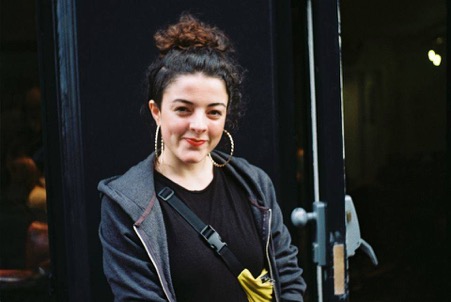
Killing Eve’s female-led approach to the spy thriller reverses a number of gender stereotypes. However, reversing a stereotype is not always the same as challenging it, and one which the series struggles to challenge is the trope of the dangerously fashionable woman.
In Killing Eve, this woman takes the form of sharply dressed assassin, Villanelle. Her passion for her work is matched only by her passion for designer clothes, and she stalks the streets of Europe in an array of the latest fashions. A hit in Tuscany requires a lace-trimmed Burberry dress, for example, while one in Bulgaria calls for a satin Miu Miu bomber jacket. In Berlin, she dons a frilly JW Anderson top to hide in plain sight as she spies on MI5 agents, before changing into a brocade Dries van Noten suit to stab one of them. Then, of course, there is the striking Molly Goddard dress and Balenciaga boots ensemble that she wears to visit her psychiatrist in Paris. Villanelle’s fashionable clothes are both her tactical wear and markers of her confident, fearless character.
Crucially, Villanelle’s fashionable appearance also contrasts her with Eve, the unassuming MI5 agent tasked with hunting her down. Eve favours ill-fitting suits and anoraks, and is so decidedly unfashionable that Villanelle feels compelled to send her a selection of designer clothes. Eve cannot let herself enjoy them, though, for they represent all that she feels she is not. Over the course of the series, her unfashionable appearance thus becomes associated with a certain rationality and self-control, thereby distancing her from Villanelle both visually and characteristically. As such, Villanelle’s fashion sense might appear confident and fearless in and of itself, but it can also be read as unruly and ostentatious when contrasted with Eve’s appearance.

In some respects, it is exciting to see a woman as fashionable as Villanelle on screen. Fashion and costume are so often viewed as mutually exclusive, but Villanelle’s costumes show how fashion can be utilised in costume design without appearing distracting. Furthermore, it is unusual for a female character to embrace fashion without fear of being perceived as frivolous or overly feminine, and to completely own her appearance. In turn, Villanelle’s costumes are refreshing because they allow both her and the viewer to unashamedly indulge in fashion.
However, this also makes it all the more frustrating that Killing Eve then associates Villanelle’s fashionable appearance with wrongdoing, for the trope of the dangerously fashionable woman is as old as the moving image itself. More often than not, the fashionable woman is also confident and assertive, independent and liberated, and her fashion sense, as a visible manifestation of modernity and change, comes to symbolise these characteristics. There is a reason that the vamp always wears a short dress and bobbed hair, and that the femme fatale has a fondness for shoulder pads and red lipstick; her fashion sense others her, often prefiguring her downfall.
Villanelle’s fate may not yet be known, but positioning her as the dangerously fashionable woman nonetheless renders her character as dated as it is enjoyable. Might the characterisation of Killing Eve’s leads feel different, perhaps, if Eve were the fashionable one?









![A lady in a floral dress holding a cup of tea signed and dated 'GEORGE/ BARBIER/ 1925' (recto) and extensively inscribed and titled [...] “La tasse de thé/ Séraphine en rose et noir [...]' and with stamp '147 E' (verso), George Barbier (Nantes 1882-1932 Paris), traces of pencil, pen and black ink, grey wash, watercolour, height 26.3; width 20.4 cm. Copyright: Christie’s.](https://sites.courtauld.ac.uk/documentingfashion/files/2016/02/George-BARBIER-LatassedethSraphineenroseetnoir-2752014T18358-2-387x504.jpg)




